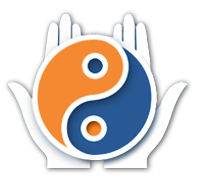Integrated medicine is the way health care should be. Addressing a person’s whole self – body, mind and spirit – leads to faster healing, better outcomes, less pain, fear and anxiety and cost savings for the facility. However every facility interprets what an integrative program is for themselves. I have seen programs that offer community programs such as yoga and mindfulness which is a good start but a truly integrative program offers services to their patients on a regular basis. Whether you work in a hospital, nursing home, hospice or clinic integrative care will help patients feel better while decreasing cost of care. Isn’t that what every facility and patient wants?
One exemplary hospital is Abbott Northwestern in Minn. They have an integrative medicine team and offer patients several different therapies. These therapies include healing touch, aromatherapy, guided imagery, massage, music, acupuncture, and reflexology. Here is an excerpt from an article published in Managed Care 2012 regarding cost and outcomes of a study completed at that facility. Regression analyses covered the first half of 2009, when 1,000 patients who received integrative services provided pre- and post-intervention pain scores. “We analyzed whether pain management affected the costs of the hospital stay,” says principal investigator Jeffrey Dusek, PhD, director of research for the hospital’s integrative medicine division. “When pain was reduced, total charges averaged $2,000 less per stay for those 1,000 patients, a total of about $2 million. We suspect that one cost-reduction factor is that patients receiving integrative medicine had pain managed without medications, thus requiring fewer medications.” The immediate effect on self-reported pain scores was an average reduction of approximately 55 percent, without increased risk of adverse effects. Results were published in the March 2010 Journal of Patient Safety.
A pilot project to look at patient experience and costs of integrative therapies was done by Kligler in 2010. He compared 89 head and neck cancer in-patients to 74 patients who were hospitalized and released before the project began. “Patients in the study healed faster, and reported less pain and more energy overall, than the previous patients,” says Kligler. “They needed less medication for nausea, sleep, or anxiety. We found a savings of $150 per day per patient for overall meds.”
Providing healing touch or guided imagery to patients when I worked in the ER helped them to decrease pain and anxiety as they waited for the MD or when they were reluctant to take medication. I worked on hospitalized friends and family to help lower blood pressure, heart rate and improve breathing while in critical care or in a telemetry unit. Healing touch provided them with a sense of calm and relaxation. They were able to sleep better and required less pain medication.
If you work in a facility I would love to hear how you feel about integrative medicine and if any holistic therapies are offered. If you or a loved one were hospitalized or in a skilled nursing facility would you be interested in receiving holistic therapies such as healing touch (a form of energy medicine), guided imagery, aromatherapy, acupressure?
If you would like to talk more about bringing integrative care into your place of work or learning holistic therapies please email me, laurie@mindandbodymethod.com. I would love to schedule a time to talk.
